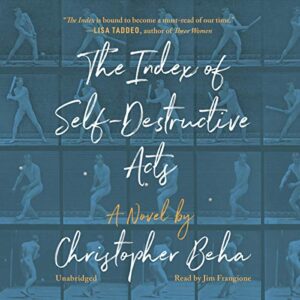As I write, we Americans are suspended in a crosshatched nexus of public crises—the pandemic, dishonest governance, broad new anger over unequal justice for Black people. All of these themes are deeply entangled in the country’s history, and this year we seem to be reliving them all at once. To paraphrase New Yorker writer Susan Glasser (disclosure: we went to high school together), events of 2020 have echoed 1918, 1939, 1929, and “Now: 1968.”
But for the most part, I don’t think we really believe that the past was all that much like the present. Sometimes we fall on the side of life being “easier”—the proverbial era when “nobody locked their doors” and kids ran around outside all day. (Never mind that during this era, Emmett Till was murdered a little over an hour from my hometown. Who, Whom indeed!)
Or, if times were hard, we comforted ourselves that societal institutions—communities, churches—were all the stronger to help the lost citizen sheep. Apparently, there was no Bowling Alone. We tend to flatten both people, and events, in our recollection, good and evil, in our endless American love for dichotomy. Nothing then could have had the complexity of Now.
Which is why I was blown away when, a few weeks into the COVID shutdown, I picked up Katherine Anne Porter’s short 1939 novel Pale Horse, Pale Rider, which takes place during the 1918 Flu Pandemic. This was not an original idea of mine—I’d read a fantastic essay about the book on Slate.com by one Rebecca Onion, “Looking for a Good Pandemic Story to Soothe Your Coronavirus Anxieties? Try Katherine Anne Porter’s Pale Horse, Pale Rider.” Onion’s essay narrates the plot of the novel, which roughly corresponds to Porter’s own experience of being a newspaper reporter in Denver in her late 20s. She commences a romance with a soldier awaiting dispatch during World War I, then falls ill with the flu, the soldier taking care of her.
Obvious news peg aside, I was amazed at how contemporary this eighty-year old novel, based on hundred-year-old events, felt—and how it challenged my own wooden assumptions. Published only a couple of years after Faulkner’s Absalom, Absalom, and a year ahead of Hemingway’s For Whom the Bell Tolls, this novel’s style, by contrast, is immediate and introspective.
But it is equally as mythic, dripping with a sense of presence and moment, and at the beginning drops us in medias res into its protagonist Miranda’s dreams, which she does not yet know are fever-fueled: “In sleep she knew she was in her bed, but not the bed she had lain down in a few hours since, and the room was not the same but it was a room she had known somewhere.” In that dream that launches the novel, she wakes somewhere out in the country, among the shades of kin, mounting a horse named Graylie: “’Come now, Graylie, she said, taking his bridle, we must outrun Death and the Devil.’”
Then, just as seamlessly, Miranda wakes wearily into her life where—just as now—multiple disruptions are unsettling the public scene. It’s a liminal time, when all the certainties are being questioned. There’s the war, about which reaction is already both rote and cynical. “’Oh, the war,’” Miranda remembers out loud when she is buttonholed by a high-pressure Liberty Bond salesman:
It was habitual, automatic, to give that solemn, mystically uplifted grin when you spoke the words or heard them spoken. ‘C’est la guerre,’ whether you could pronounce it or not, was even better, and always, always you shrugged.
Second, there’s the worrisome flu pandemic that is settling down around the city: “’It seems to be a plague,’ sa[ys] Miranda, ‘something out of the Middle Ages. Did you see so many funerals, ever?’” She says it while on a date with Adam, the handsome soldier temporarily on leave in Denver, who has just happened to move in down the hall in her rooming house. And already, she has been ignoring the fatigue and headache that is getting in the way—of her work as a newspaper theatre reporter, her dates with Adam, and her one disillusioning trip with some society girls to give candy and cigarettes to soldiers.
Miranda is, of course, coming down with the flu herself. The great turn, and beautiful narrative, of the novel is how the soldier, Adam, is the one who takes it upon himself to care for Miranda when the fever finally overwhelms her, and the landlady of the rooming house wants her sent to the hospital immediately.
“’They can’t get an ambulance,’” Adam says to her, “’and there aren’t any beds. And we can’t find a doctor or nurse. They’re all busy. That’s all there is to it. You stay out of the room, and I’ll look after her.’” It is Adam who collects her prescription, brings her food and drink, and holds a basin while she vomits—after which he washes her face and hands.
That was the unexpected thing for me: It’s tough soldier Adam here who’s in the nurturing position that’s usually assigned to women. And it is his care that leaves Miranda to be the heroic, authorial navigator of the odyssey of her own illness. (The very root of her name, “mira!” or “look!” in Spanish, indicates that she’s the one here with the power of the gaze. I don’t think it’s too far-fetched to say that.)
Which points to what’s truly radical about this novel, and which turned over any old lingering thinking I had about women’s empowerment in literature beginning only in, say, 1963. It was published almost a quarter-century before Mary McCarthy’s purportedly radical The Group, but it is far more emotionally sophisticated.
Pale Horse, Pale Rider’s narrative center focuses on a woman as fully realized as we might imagine ourselves to be today—a bone-weary professional woman moving in a smoky newsroom, navigating challenges (co-workers, actors angry at bad reviews) that seem amazingly contemporary.
Above all, in an inversion of the best tropes of literature, it is Miranda who’s the desiring one, and Adam the object of desire. And it is Adam the sacrificial object that is ultimately lost—you’ll just have to go read it yourself, really you must.
Caroline Langston was a regular contributor to Image’s Good Letters blog, and is writing a memoir about the U.S. cultural divide. She has contributed to Sojourners’ God’s Politics blog, and aired several commentaries on NPR’s All Things Considered, in addition to writing book reviews for Image, Books and Culture, and other outlets. She is a native of Yazoo City, Mississippi, and a convert to the Eastern Orthodox Church. She lives outside Washington, D.C., with her husband and two children.





